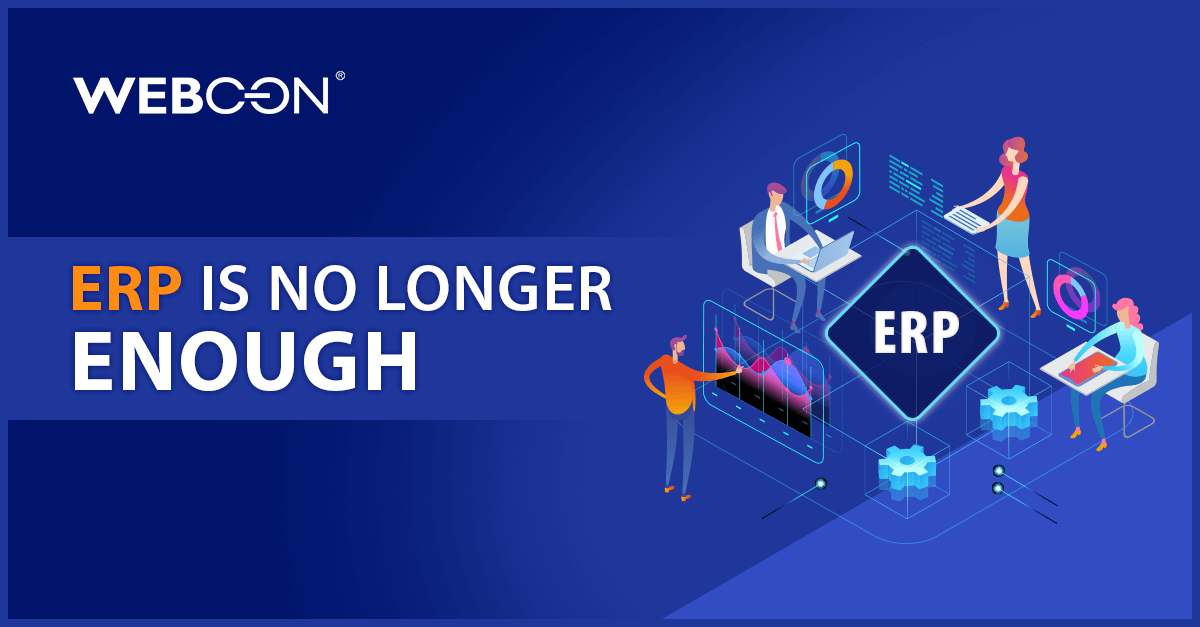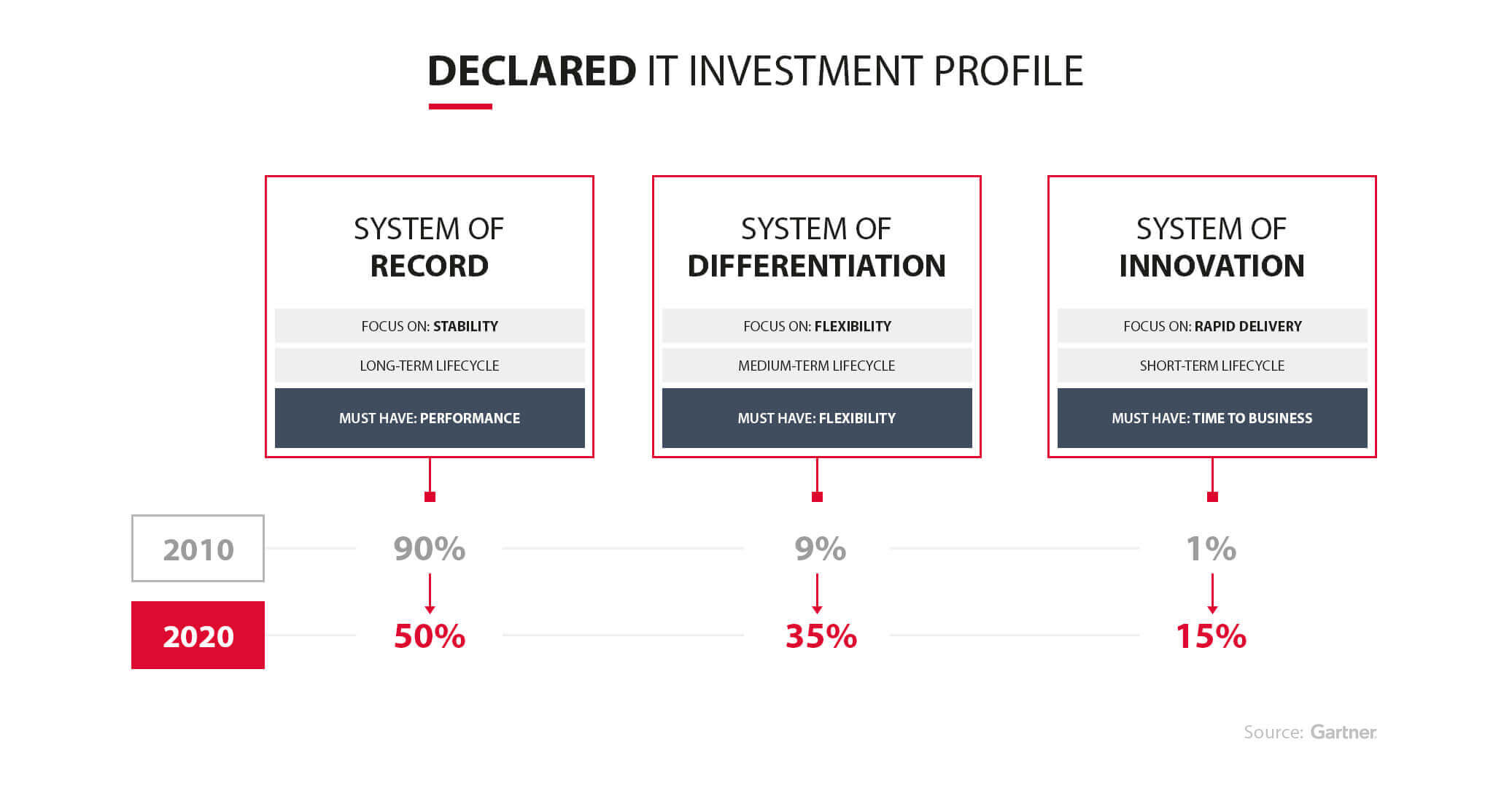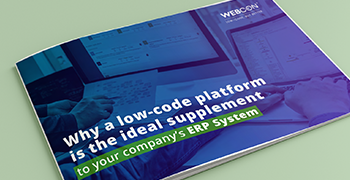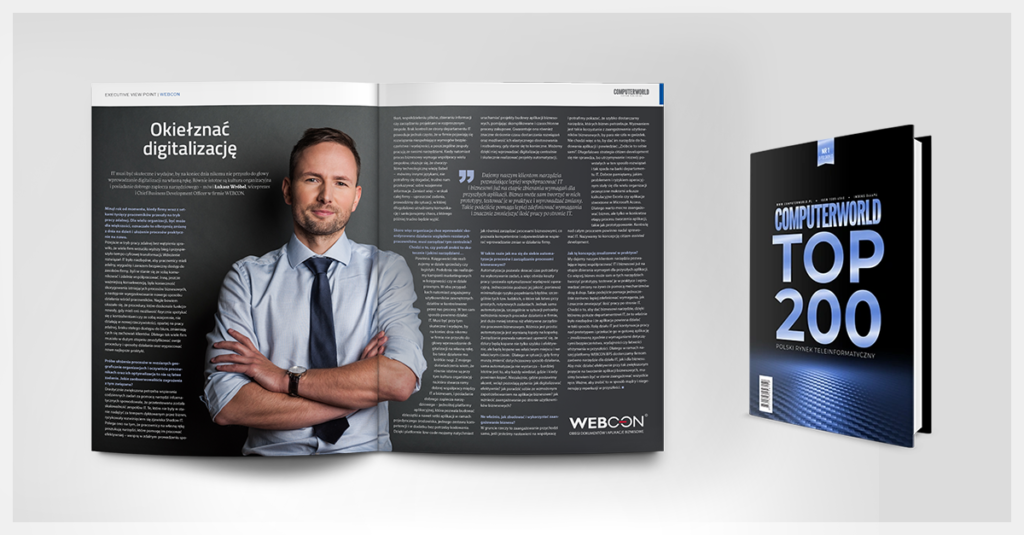Just thirty years ago, the use of ERP systems for business management was considered innovative. Today, the use of technology in running an organization is a necessity, and the ERP class system has become as obvious a resource of a company as company cars for sales representatives. So if the use of ERP has become standard today, how can modern companies ensure competitiveness and stand out on the market?


The first attempts to manage businesses using IT solutions appeared in the 1960s. Prototypes of ERP (Enterprise Resource Planning) systems were mainly used for warehouse management, production planning and the distribution of goods. Companies quickly noticed that using IT solutions enabled them to work more efficiently and effectively, which directly translated into an increase in their competitiveness on the market. In subsequent years, company management systems became enriched with new modules, covering further areas of the organization's operations that were significant from the entrepreneur's point of view, and increasing the degree of integration of individual modules, thereby creating a unified management environment, known today as ERP.
As the years went by, ERP systems became so widely used that they ceased to be an innovation on which the company's competitive advantage could be built. Today, they are perfect as core systems – they help with the efficient allocation of raw materials, managing warehouse inventories and the process of replenishment, enable the efficient execution of commercial transactions and keep a record of all business activity of the enterprise in accordance with applicable regulations. Using the Pace-Layered Application Strategy model, proposed by the world’s leading research and advisory company Gartner, ERP software is a classic example of Systems of Record.
Gartner quite rightly points out that, in addition to the foundation in the form of Systems of Record, every company must invest in software supporting processes that truly distinguish it from the competition, and those that support innovations implemented in the company – says Łukasz Wróbel, Chief Business Development Officer, SVP at WEBCON. IT directors from around the world, surveyed by Gartner, declare that in 2020, up to half of the entire budget allocated to business applications will be dedicated to these two categories – Systems of Differentiation and Systems of Innovation, he adds.


Objective: well-designed IT architecture
- Systems of Record – the company's core technology; basic IT infrastructure ensuring a stable and efficient service of the most important key processes in the company. A properly designed core acts as the basis – a kind of a spine – on which the implementation of innovation is based.
- Systems of Differentiation – solutions supporting business processes reflecting the characteristics of the industry in which the company operates, as well as those on which the organization is focusing to outperform the competition. In a situation where most companies have a similarly designed technological backbone, in the form of a more or less universal ERP system, it is this group of IT solutions that should be focused on in order to compete with other companies in the industry.
- Systems of Innovation – in an era of digital transformation, this pillar is a kind of icing on the cake, showing how to operate in a business environment under the rapid development of new technologies. These are constantly evolving solutions, often created in an agile way – in order to meet the constantly changing requirements of business processes. They generally involve such things as handling new sales channels, navigating and enforcing changes in procedures resulting from the introduction of a new strategy, or adapting to changes in regulations and external conditions.
More and more organizations are aware that, in order to compete with the best in their industry, they must focus on developing applications that support business processes making them stand out on the market. This is confirmed by Gartner’s forecasting that in 2020 only half of a company's financial resources will be allocated to Systems of Record, while 35% of the budget will go to the development of Systems of Differentiation and 15% to Systems of Innovation. This is a considerable change compared to 2010, where the distribution of funds in the same categories was 90%, 9% and 1% respectively.
Dilemma: improve the old or invest in new
It seems that today, the question is not whether it is worth investing in software supporting business management and automation of business processes, but how to do so wisely and effectively.
The implementation of a new ERP system is one of the most important IT projects in the organizations we have the opportunity to cooperate with, says Łukasz Wróbel. It is no wonder that companies very often make the mistake of pushing the scope of such an implementation project to the limit, attempting to support the company’s specific business processes by building dedicated solutions around the ERP system.
Dedicated modules written by the company implementing the ERP system in response to customer requirements that cannot be handled by the standard functionalities of this software may seem a good but expensive solution. Until it’s not.
The nature of business processes that are the source of a competitive advantage is that we constantly strive to develop them, we constantly polish them and adapt to market changes and new ideas, notes Łukasz Wróbel. And he continues: Therefore we must be certain that developing and introducing changes to Systems of Differentiation to support these processes will be simple and fast. Otherwise, instead of helping, these tools can start to limit our business.
Many companies have experienced firsthand that the introduction of proprietary modules developed by teams of implementation company programmers not only fails to provide sufficient flexibility and the expected speed of response, but also exposes the company to risks and makes ERP burdensome to maintain and very difficult to update to newer versions.
Is there, however, a viable alternative? Yes, there is: it is building external IT solutions that communicate with the ERP system using integration mechanisms supported by its manufacturer, such as API or webAPI. The key benefit of such solutions is the ability to provide the expected flexibility, and the easiest way to ensure that is when, instead of coding, you can configure it and then reconfigure whenever you need to. You can achieve that with low-code business process management platforms. They allow you to:
- quickly build business applications using the drag-and-drop method, with virtually no coding.
- quickly make changes during and after the creation process,
- expand as your business needs increase.
- In addition, although the platform is closely integrated with ERP, it still remains a product independent of it, so it does not block the possibility of updating it.
A good example of a situation in which the use of external solutions is better than adding new modules to the ERP system is the company’s internal document management, explains Łukasz Grotowski, a consultant from XPLUS, specializing in the implementation of ERP systems, Microsoft Dynamics 365 and low-code platform WEBCON BPS in companies from the construction, production and trade sectors. In this regard, low-code solutions are a perfect complement to ERP systems. Leading document circulation outside of the ERP system also enables workflows to be created that do not require integration, and the user has one coherent digital environment, offering access to all the applications implemented in the company. Thanks to the low-code platform, the implementation of electronic document circulation is faster and the solution itself is more flexible. In addition, it is a friendly tool for the users themselves, and allows for convenient data entry, which is imported into the ERP system where all accounting operations are already taking place, adds Łukasz Grotowski.
The advantage of choosing a low-code platform is also standardization: business applications are configured, not written by programmers, so they all look and behave the same. This solution also provides the company with a safety cushion in the event of employee turnover in the IT department. A new team member will easily understand the logic of the application built by his predecessor, and will be better able to maintain and develop it without any risk to ongoing processes.
ERP or BPM?
The correct question should not include "or", but rather "for what?" Well-chosen and properly implemented ERP software, as a typical example of System of Record, provides a solid IT backbone enabling the stable functioning of every enterprise, regardless of size. However, ERP systems should not be treated as solutions for everything, and dedicated, tailor-made applications are an integral part of the IT architecture of modern enterprises. The nature of the processes they support, however, requires them to be created differently than before – in order to ensure security in the face of employee turnover (whether on the side of the company or IT solutions provider) and the possibility of easily and quickly implementing changes, while complementing ERP systems without disrupting the work. Therefore, when thinking about digitalization comprehensively, it is worth looking for IT tools that will form the basis for the implementation of the Pace-Layered Application Strategy, and those that allow for the wise improvement of business processes that are specific for each organization. This is how a long-term competitive advantage is built in the era of Industry 4.0.









